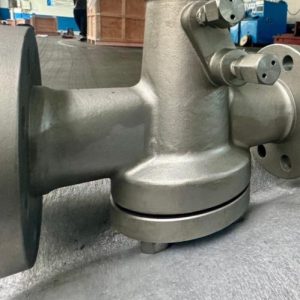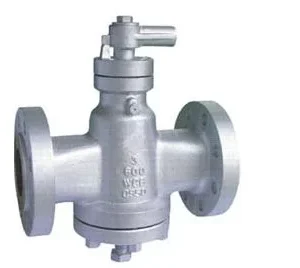Our Shop
Contact us for all your questions and requirements
Lubricated plug valve manufacturers in Italy
Valvesonly Europe is well known for Lubricated plug valve manufacturers in Italy. A lubricated plug valve is a type of quarter-turn valve that utilizes a cylindrical or tapered plug with a passage through it to control flow. It is aptly named for its reliance on lubrication to ensure smooth operation, reducing friction and wear between the plug and the valve body.
Working Principles:
The operation of a lubricated plug valve is relatively straightforward yet highly effective. When in the closed position, the plug blocks the flow path, creating a tight seal against the valve body to prevent fluid passage. Conversely, when the valve is in the open position, the plug rotates to align its passage with the flow direction, allowing fluid to pass through the valve unimpeded.
This quarter-turn action makes lubricated plug valves ideal for applications requiring rapid on/off operation or precise flow control. Additionally, the lubrication of critical components ensures smooth performance over an extended service life, reducing maintenance requirements and enhancing overall reliability.
Installation Guidelines for Lubricated Plug Valves:
Proper installation is paramount to the optimal performance and longevity of lubricated plug valves. Here are some essential guidelines to follow:
Valve Orientation: Ensure the valve is installed with the flow direction indicated by the arrow on the valve body. Incorrect orientation can impede flow or compromise sealing integrity.
Mounting Position: Install the valve in a position that allows for easy access to the actuator and maintenance points. Consider factors such as clearance for operation and servicing when determining the mounting orientation.
Lubrication: Prior to installation, apply a suitable lubricant to the plug and valve body surfaces to minimize friction during operation. Follow manufacturer recommendations for lubrication frequency and type.
Flange Alignment: Properly align flange connections to prevent stress on the valve body and ensure a leak-tight seal. Use appropriate gaskets and fasteners according to the specified torque requirements.
Actuator Integration: If utilizing an actuator for automated operation, ensure compatibility with the valve and follow manufacturer guidelines for installation and calibration.
Testing: Conduct thorough testing of the valve after installation to verify proper functionality and sealing integrity. Perform leak tests and operational checks according to industry standards and regulatory requirements.
Difference between Lubricated and Non-Lubricated Plug Valves:
While both lubricated and non-lubricated plug valves serve the common purpose of flow control, they differ significantly in their design and operational characteristics.
Lubrication Requirement: The most apparent distinction lies in the lubrication requirement. Lubricated plug valves rely on grease or another lubricant to minimize friction between moving parts, whereas non-lubricated variants utilize materials such as Teflon or elastomers to provide inherent lubricity without the need for additional lubrication.
Maintenance Intensity: Lubricated plug valves typically require periodic maintenance to replenish lubricant and ensure smooth operation. In contrast, non-lubricated plug valves may offer reduced maintenance requirements due to their self-lubricating properties.
Operating Temperature Range: Non-lubricated plug valves often exhibit superior performance in extreme temperature environments, as they are less susceptible to lubricant degradation or solidification. This makes them suitable for applications involving high or low temperatures where lubricated valves may falter.
Lubricated plug valve manufacturers in Germany and Italy rely on the close contact between the plug and valve body surfaces, facilitated by lubrication, to achieve sealing.
Description:
Available materials: F22, CF8, CF3, CF3M, Ductile iron, WCB, WCC, WC9, WC6, Alloy 20, SS304, SS316,CF8M, SS316L, SS904L
Class: 150 to 2500, PN10 to PN450
Size:1/2” – 24”
End: Flanged, Socket weld, Butt weld, Screwed.
Operation:-Pneumatic Actuator , Electric Actuator ,Lever operated ,Gear operated
Showing the single result









